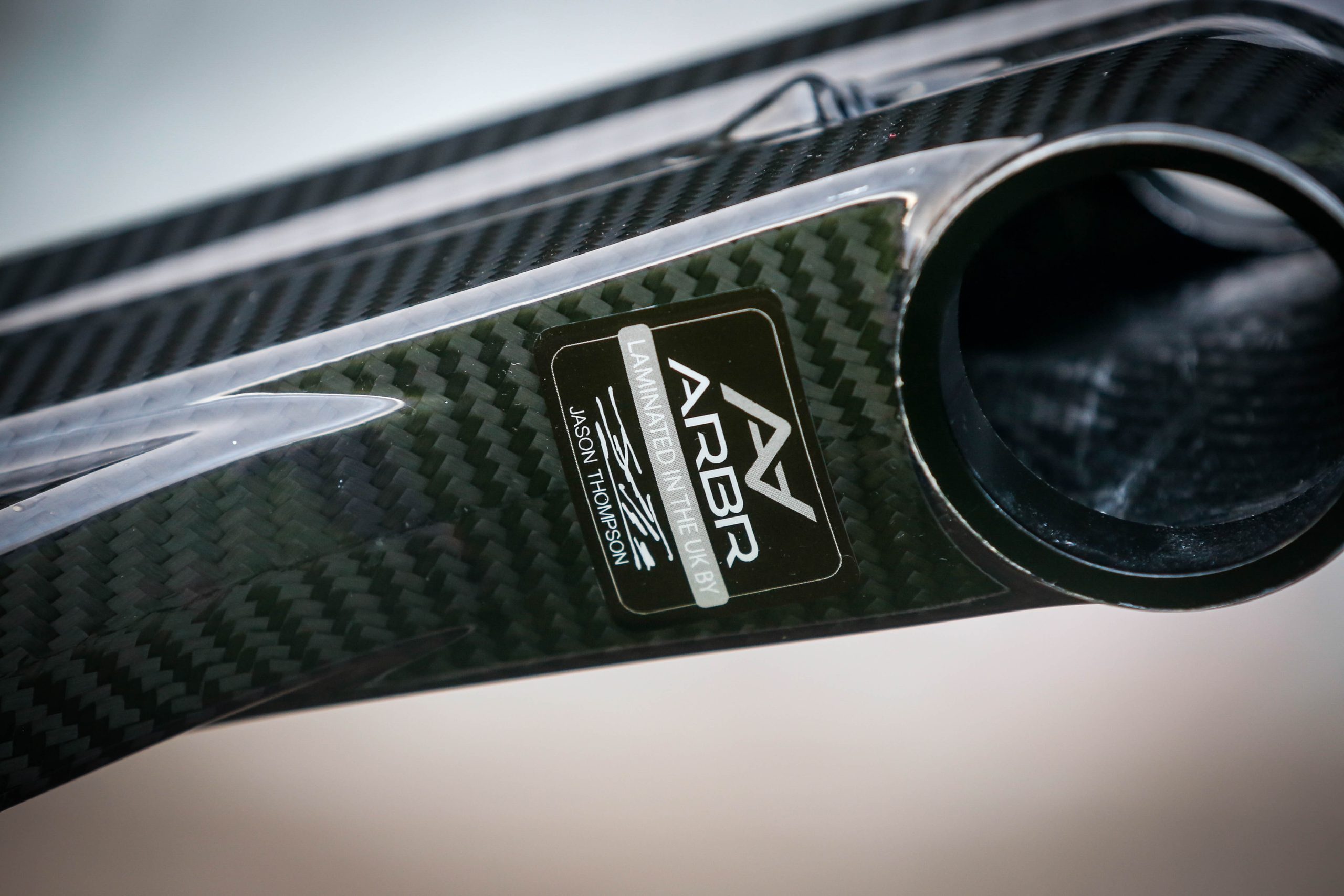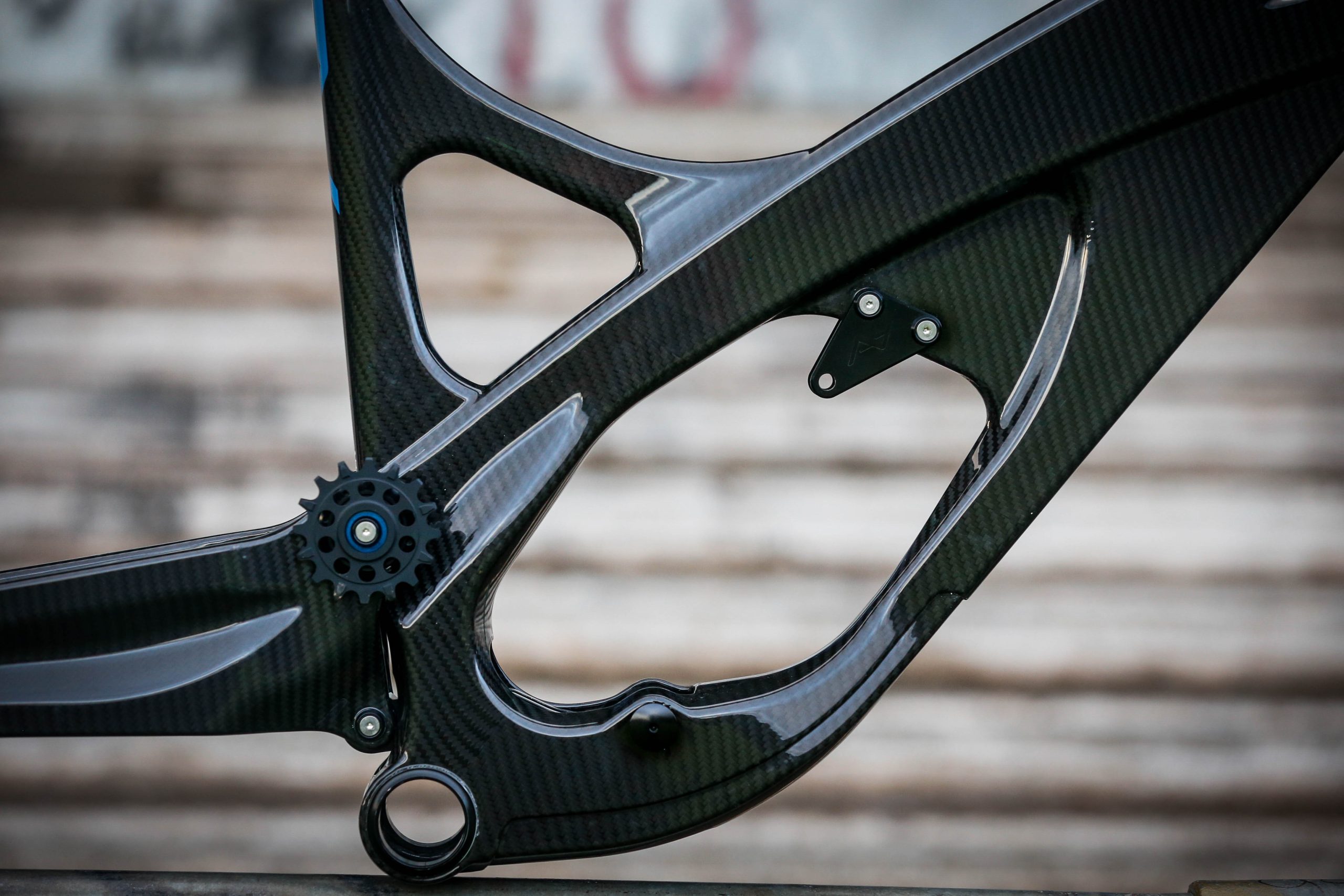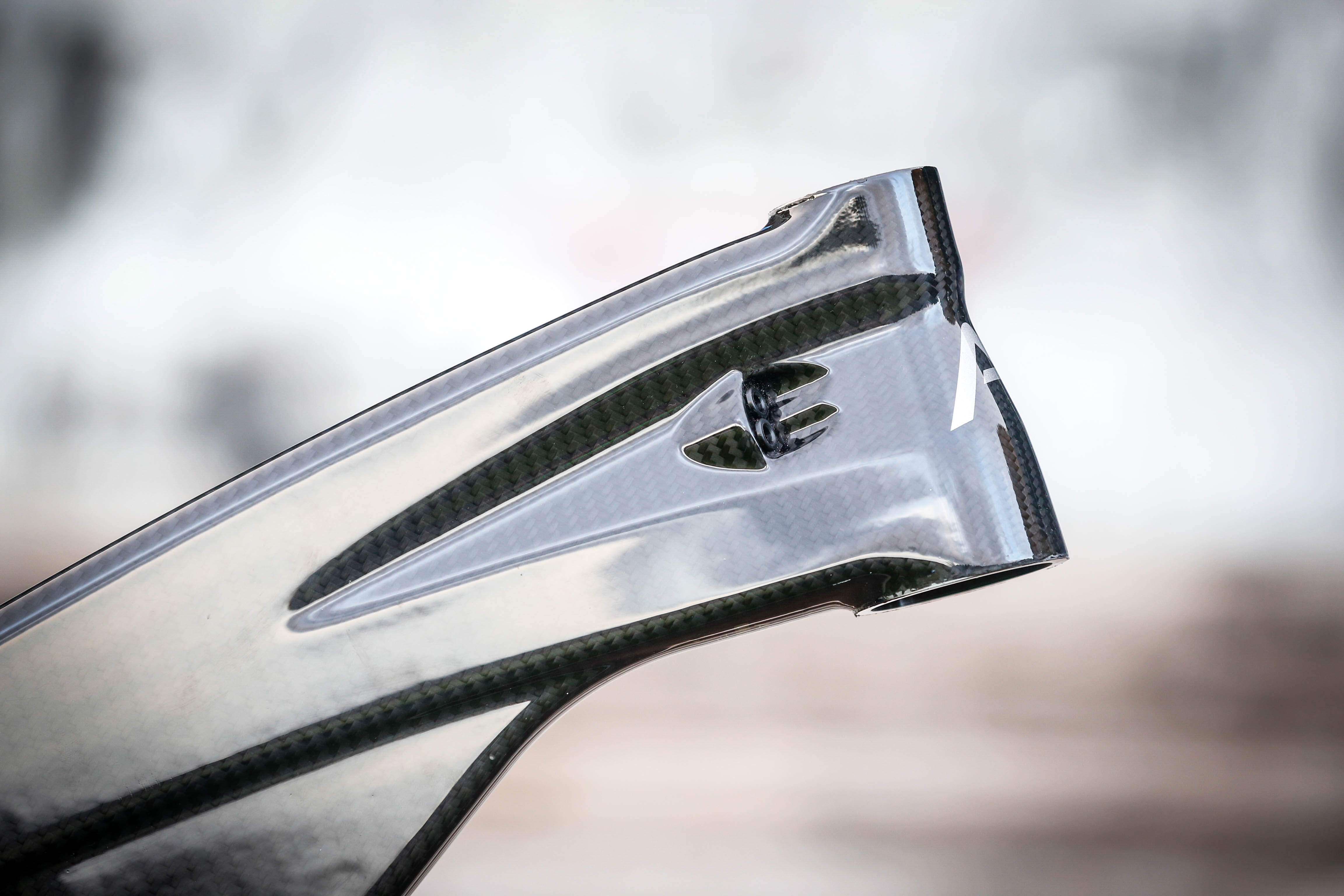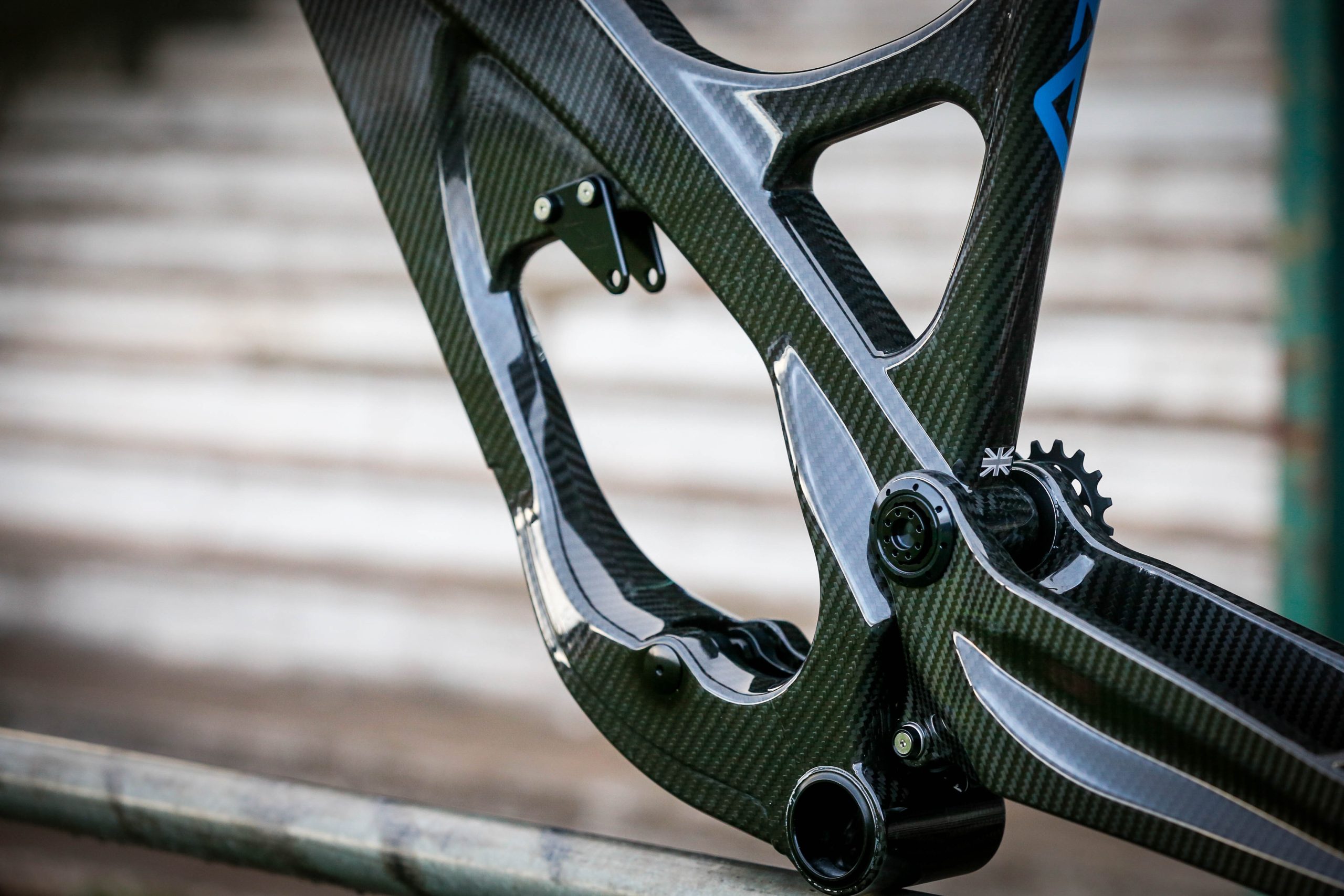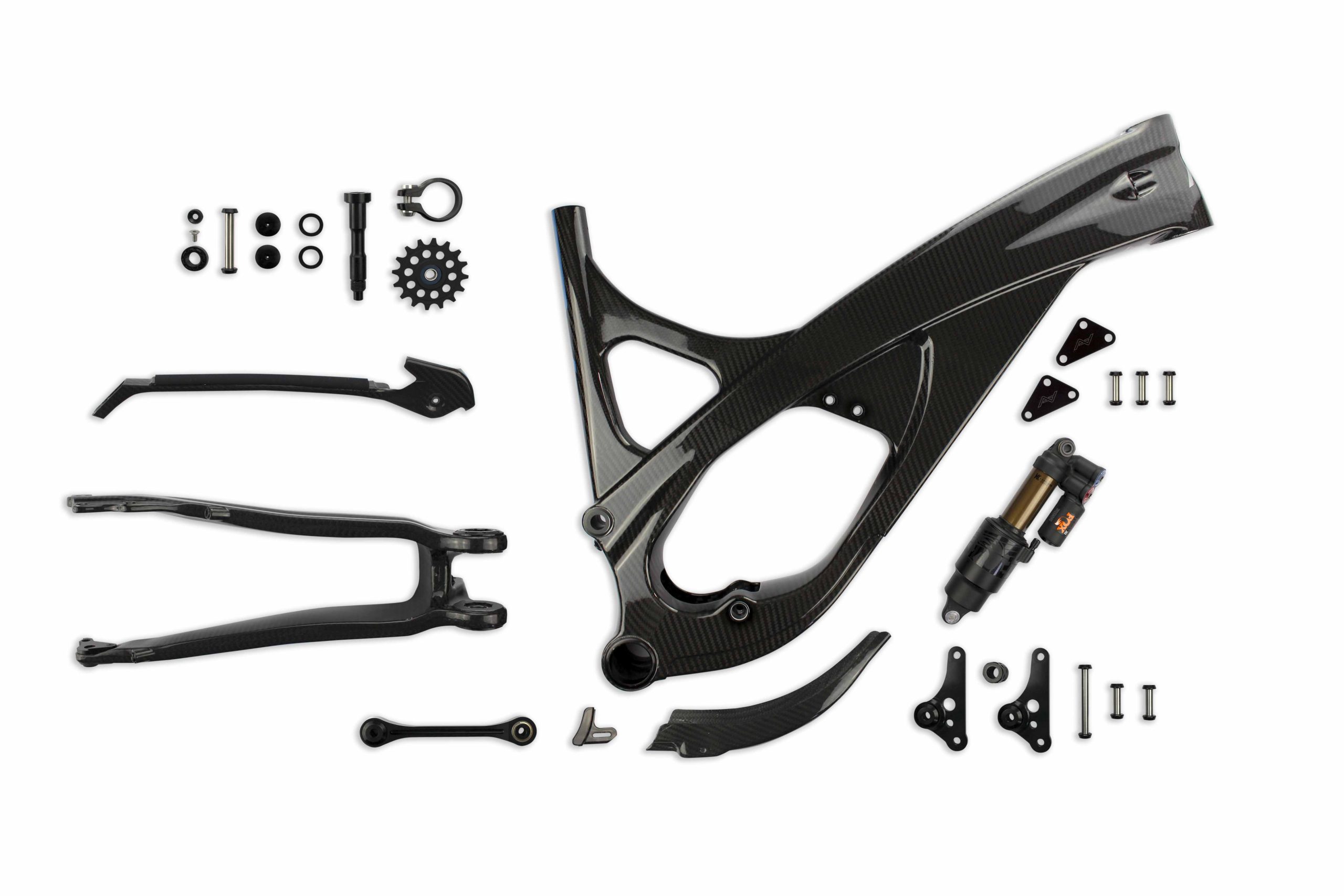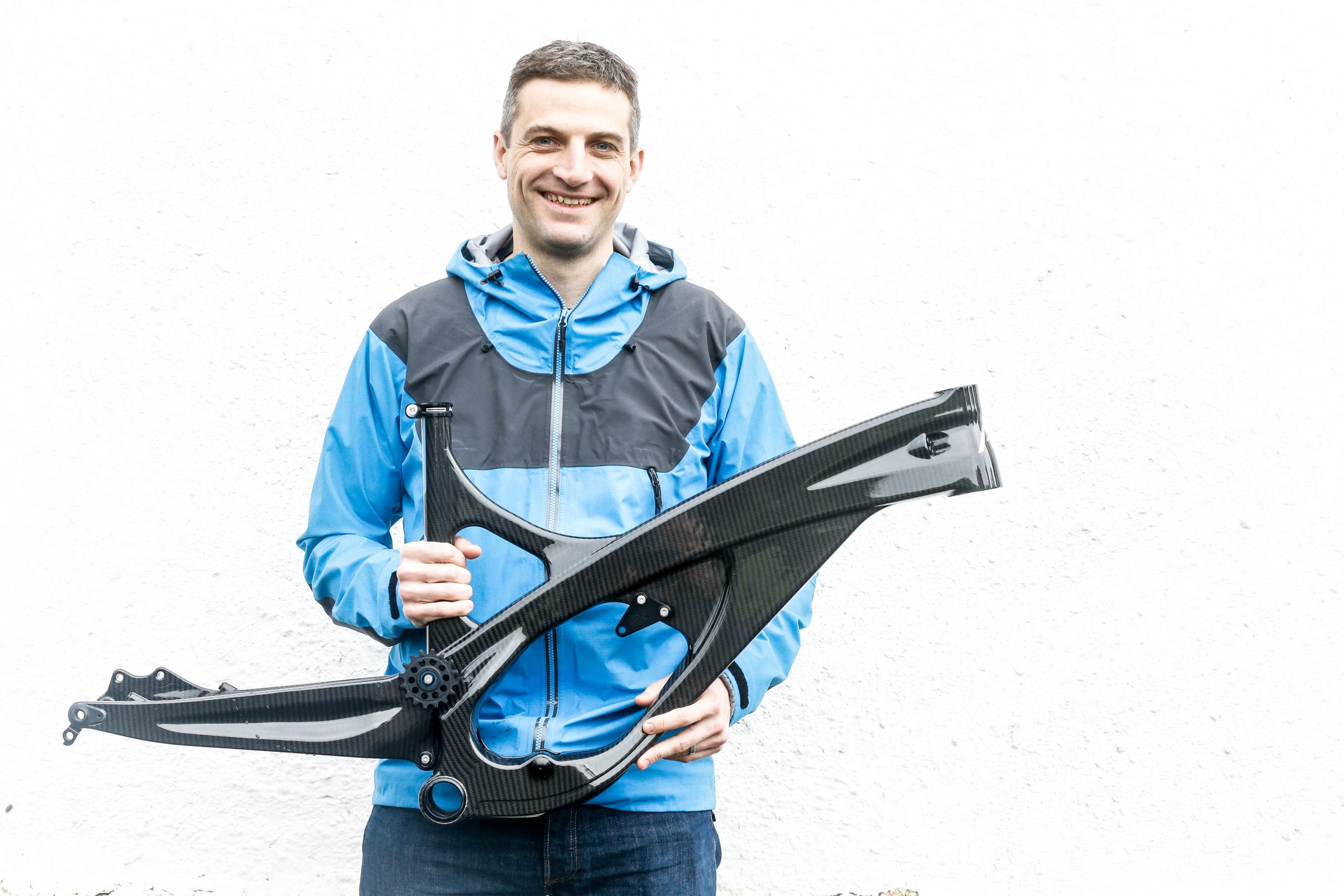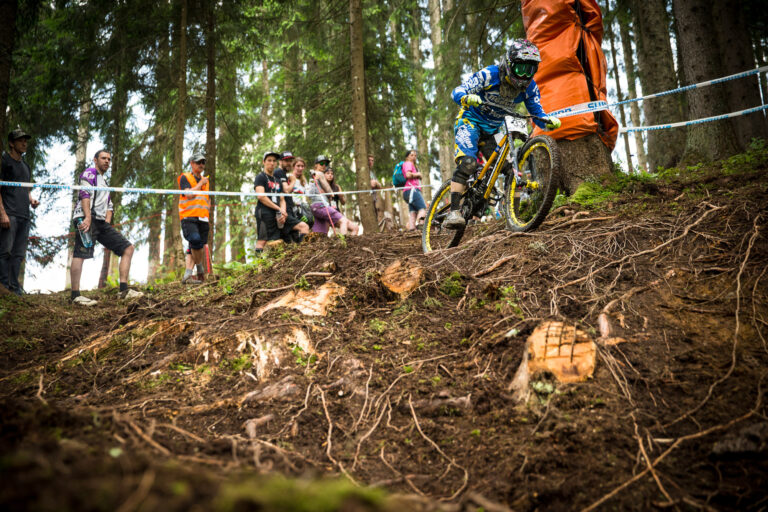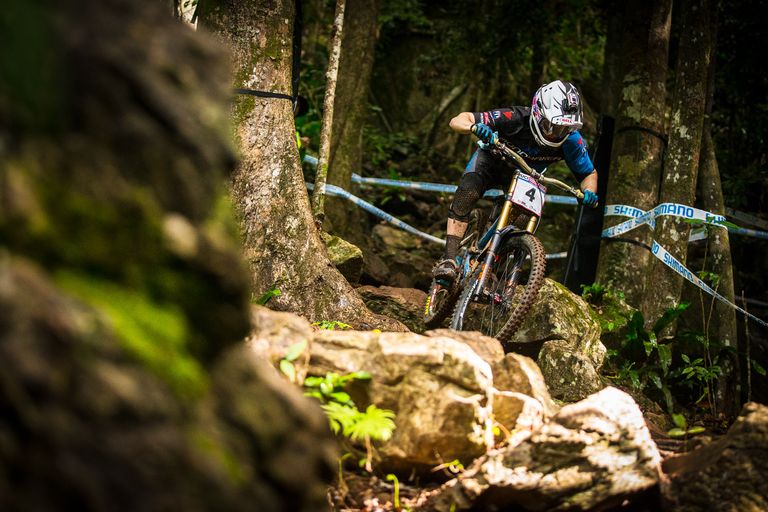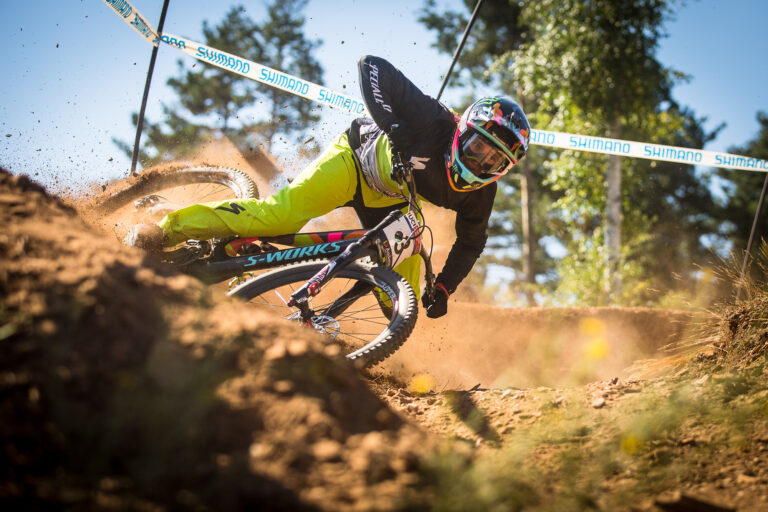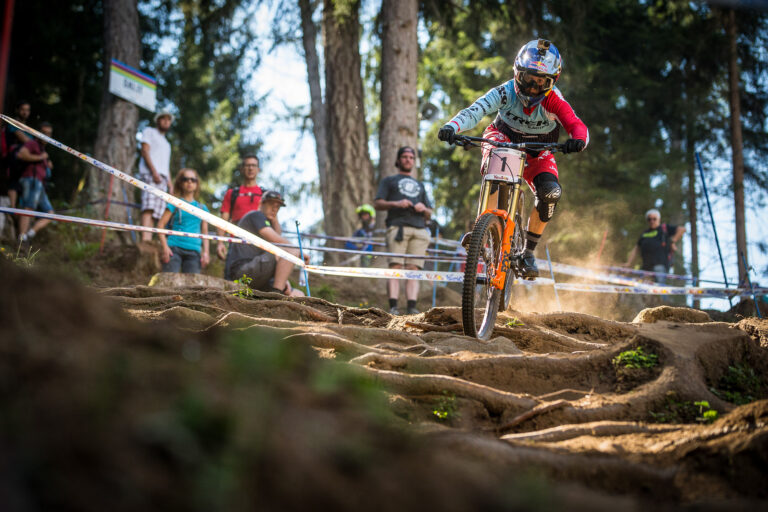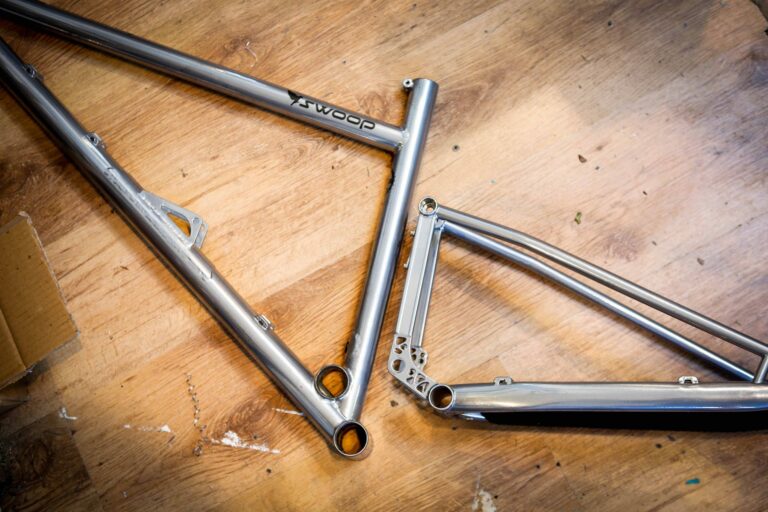The man behind the frame is Robert Barr, owner of one of a new wave of high-class, limited availability bike companies that are much, much more than the give-it-a go garage creators which although admirable never quite have the drive to make a brand not just a reality but flourish. We have seen the studious and methodical rise of Unno bikes, there will be more, created not just out of curiosity or dissatisfaction of what’s available but through a desire to make something truly unique, special. There are many interpretations of boutique bikes, people sometimes fooled by the paintwork hiding bikes that are often quite ordinary and certainly two a penny. In ARBR you are getting the exclusivity that has often been incorrectly attributed to bikes that have long since lost the undivided attentions of their owners.
It’s in the garage that might well lie the superiority. Barr and his team are no strangers to the pit lane and behind this brand you will find an incredible pool of skill and knowledge gained through many years working in Formula One, Moto GP and Superbike racing. Obviously there are quite different ways to achieve top performance between engined sports and pedal power, so its not a given that they’d succeed. However when you mix mountainbike fanaticism with knowledge of the processes there’s a good chance you’ll be in the mix.
But has Barr and his team had a touch too much benzene in their heads or is this a really serious new British company? We recently tested the bike. In three days time they launch. You’ll see that they mean it. Here’s an exclusive on an exclusive with Robert Barr, founder of Arbr Limited.
Words and Images by Steven Jones
Is this another case of stronger, stiffer, lighter? What exactly is your aim with the Saker?
The Saker has been developed with a focus on descending at speed across demanding technical terrain. The aim was to produce a frame that allowed riders to push limits.
As such our focus was on ensuring strength targets were met rather than achieving a target weight as a primary objective. Our aim was to maximise the strength to weight ratio and achieve a stiffness that would maintain some compliance and feel in the frame.
It’s a great size for most people, an amazing balance front and rear, would you make different sizes for other people and re-proportion the frames?
We make two sizes and the balance and proportions for both are good, keeping the rider centred. If I were to deviate significantly from those sizes I would consider compensating by adjusting the chain stay length. I would also consider laminate revisions. For the time being we will keep with two sizes but that could change with demand.

